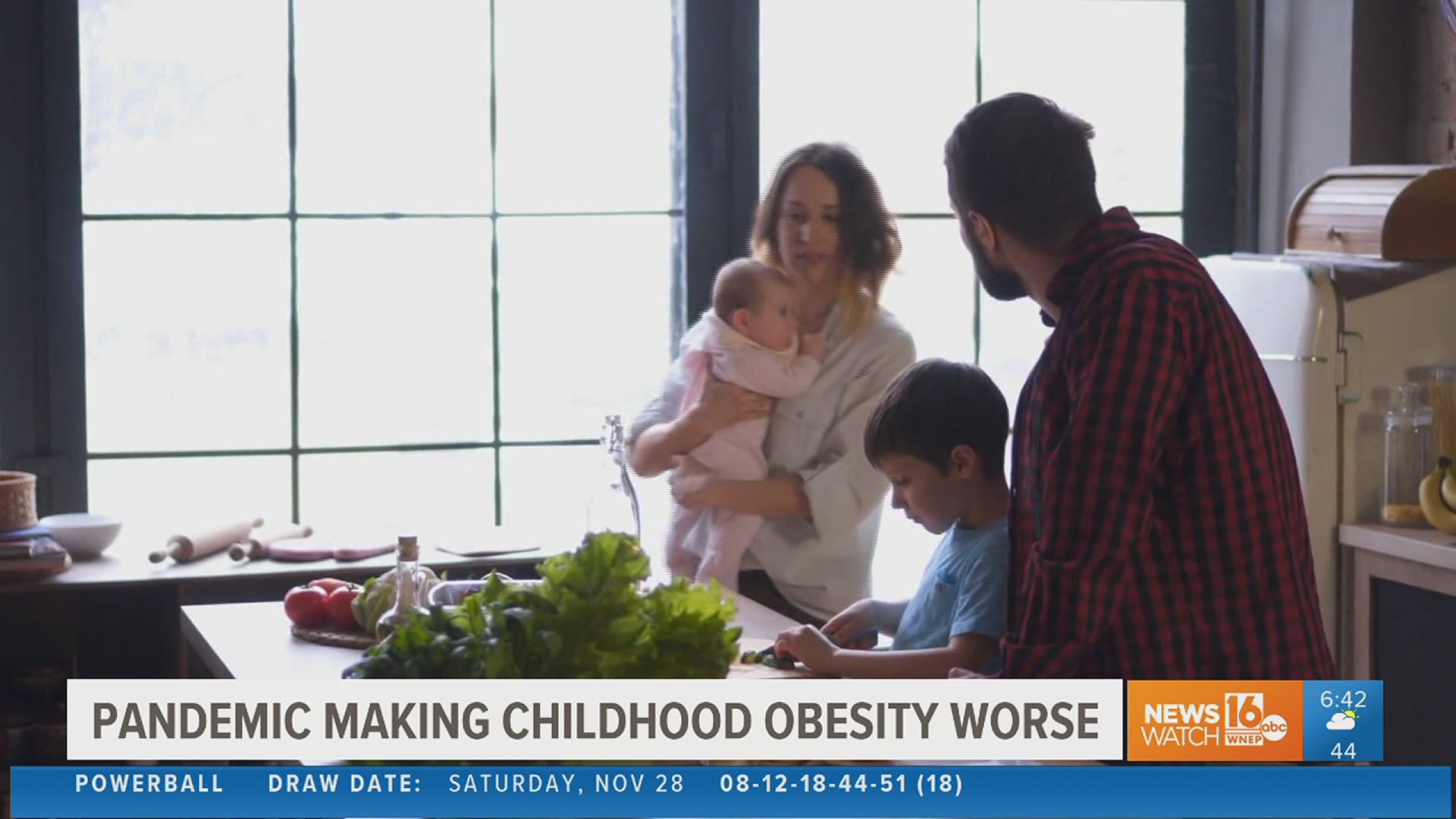SUNBURY, Pa. — Even before the pandemic hit, childhood obesity was a growing problem in the U.S.
And now that problem seems to be getting worse, especially with more kids learning from home after Thanksgiving break.
A number of medical professionals worry many children are moving less and eating more.
"That's right, I mean even prior to COVID, the latest research from the CDC, the Centers for Disease Control, does show that one in five children and adolescents are affected by obesity. And with that comes a whole lot of different health concerns," Beth Stark, a Weis Markets registered dietitian, said.
Beth worries that keeping kids at home during the pandemic is only adding to the childhood obesity problem.
"They’ re are a lot more sedentary. They may have different and easier access to different types of foods. They may not be, you know, moving, of course, as much. And they may not be eating as healthfully as they would if they were in the classroom," Stark said.
And Beth adds that “not eating healthy” and “not getting enough exercise” can lead to serious problems for kids:
"In the short term, they might have joint pain. They might be at an increased risk for breathing problems and different types of asthma. They may be at a higher risk for high cholesterol, for high blood pressure ultimately then in adulthood, which may increase the risk for heart disease," Stark said.
And you can add “higher risk for diabetes," “acid reflux,” and a “harder time recovering from COVID” to that list.
Newswatch 16's Ryan Leckey asked Stark how parents can navigate this difficult topic and talk to their kids. Here's her advice:
"Encouraging dieting for weight loss can really have counterproductive effects and that they may increase risk for disordered eating as well as obesity. So it's really about coming together as a family and taking a healthy approach across the board. That's one of the easiest things you can do as a parent to address the topic and then put some action steps in place," Stark said.
Among the recommended action steps: include kids in all of the food planning and have structured meals:
"Encouraging something small to start the day and then including, you know, small frequent meals throughout the rest of the day, if that's feasible," Stark said.
And Beth also recommends that parents keep things positive.
"Focusing overall on the positive body image. You think of all the amazing things your body does in terms of movement, in terms of schooling, activity, all those different things. It's just a more positive outlook that you can implement into your to your child," she said.
Beth Stark recommends that along with healthier eating, kids in the three to five-year-old range should be encouraged to be active as much as possible, and for children who are six to 17 years old: exercise up to 60 minutes a day, just like what would be recommended for an adult. Head here for more resources from the CDC.

